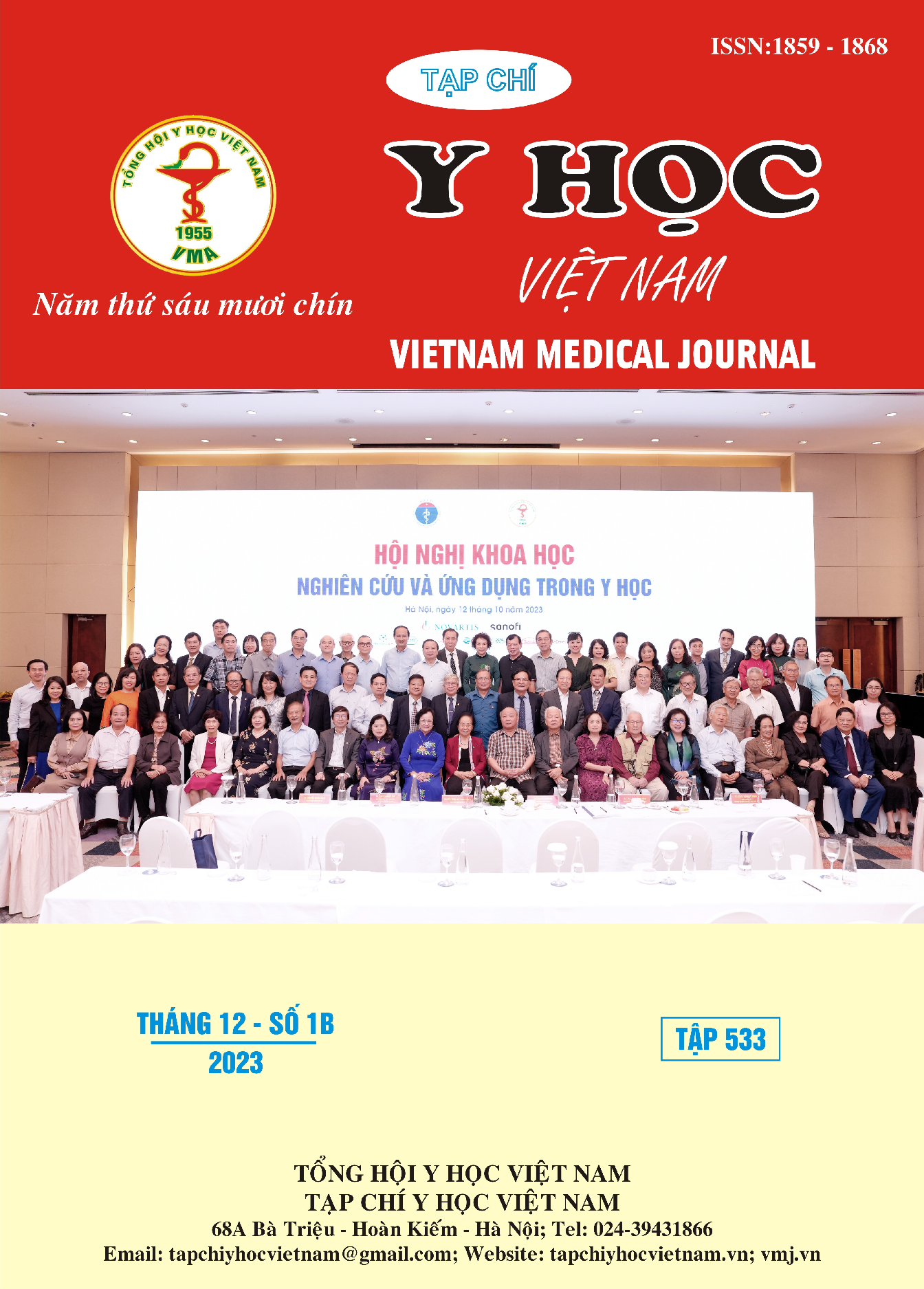CLINICAL, PARACLINICAL CHARACTERISTICS AND RELATIVE RISK FACTORS OF POSTEMBOLIZATION SYNDROME AFTER TRANSARTERIAL CHEMOEMBOLIZATION FOR HEPATOCELLULAR CARCINOMA AT K HOSPITAL
Main Article Content
Abstract
Objectives: To describe the clinical, paraclinical characteristics and relative risk factors of postembolization syndrome (PES) after transarterial chemoembolization for hepatocellular carcinoma (HCC). Subject and method: This was a retrospective descriptive study of the HCC cases who underwent transarterial chemoembolization at K Hospital from July 2023 to November 2023. Results: Sex ratio: 7,3 male per 1 female. The average age was 61,23 ± 9,97 years. Hepatitis B and hepatitis C related: 89.0%. The AFP < 20 ng/ml group accounted for 52,15%. The change in AFP, GOT, and GPT levels was not statistically significant after embolization, with p > 0.05. The postembolization tumor size decreased, being statistically significant with p < 0.05. The PES rate was 69,9%, and the most frequent symptom was right upper abdominal quadrant pain (58,9%). Gender, history of hepatitis B and C, and history of embolization were not related to the frequency of postembolization syndrome. Conclusions: Transarterial chemoembolism is safe, has few complications, and is highly effective in treating hepatocellular carcinoma.
Article Details
References
2. Shiro Miyayama, Masashi Yamashiro và et al Ikeda (2021), "Efficacy of superselective conventional transarterial chemoembolization using guidance software for hepatocellular carcinoma within three lesions smaller than 3 cm", Cancers (Basel). 13(24), tr. 6370.
3. Dongyun Yang, Diana L Hanna và Josh et al Usher (2014), "Impact of sex on the survival of patients with hepatocellular carcinoma: a surveillance, epidemiology, and end results analysis", ACS Journals. 120(23), tr. 3707-3716.
4. Lưu Minh Diệp (2022), "Đánh giá giai đoạn ung thư biểu mô tế bào gan theo phân loại Barcelona và một số yếu tố liên quan đến nguyên nhân ung thư gan tại bệnh viện Bạch Mai", Tạp chí Y học Việt Nam. 514(2), tr. tr 174-177.
5. Ngô Quốc Bộ và Ngô Tuấn Minh Đặng Đình Phúc (2022), "Một số đặc điểm lâm sàng, cận lâm sàng và hình ảnh học trên bệnh nhân ung thư biểu mo tế bào gan được can thiệp nút mạch hóa chất siêu chọn lọc tại bệnh viện K", Tạp chí Y học Việt Nam 519(1), tr. tr 354-358.
6. Ngô Quốc Bộ, Đặng Đình Phúc và Ngô Tuấn Minh và cộng sự (2022), "Đánh giá kết quả bước đầu phương pháp nút mạch hóa chất siêu chọn lọc trong điều trị ung thư biểu mô tế bào gan tại bệnh viện K", Tạp chí Y học Việt Nam. 518(2), tr. tr 213-218.
7. Nguyễn Quốc Hùng, Bùi Hoàng Tú và Phạm Quốc Thành (2013), "Ứng dụng phương pháp nút mạch can thiệp trong điều trị ung thư biểu mô tế bào gan nguyên phát", Tạp chí Điện quang Y học hạt nhân Việt Nam(12), tr. 553-559.
8. Phạm Minh Thông Nguyễn Đình Toàn và Trịnh Hà Châu (2021), "Đặc điểm hình ảnh và kết quả điều trị nút mạch hóa chất ung thư biểu mô tế bào gan ở bệnh nhân dưới 40 tuổi", Tạp chí Điện quang Y học hạt nhân Việt Nam(43), tr. 63-70.


